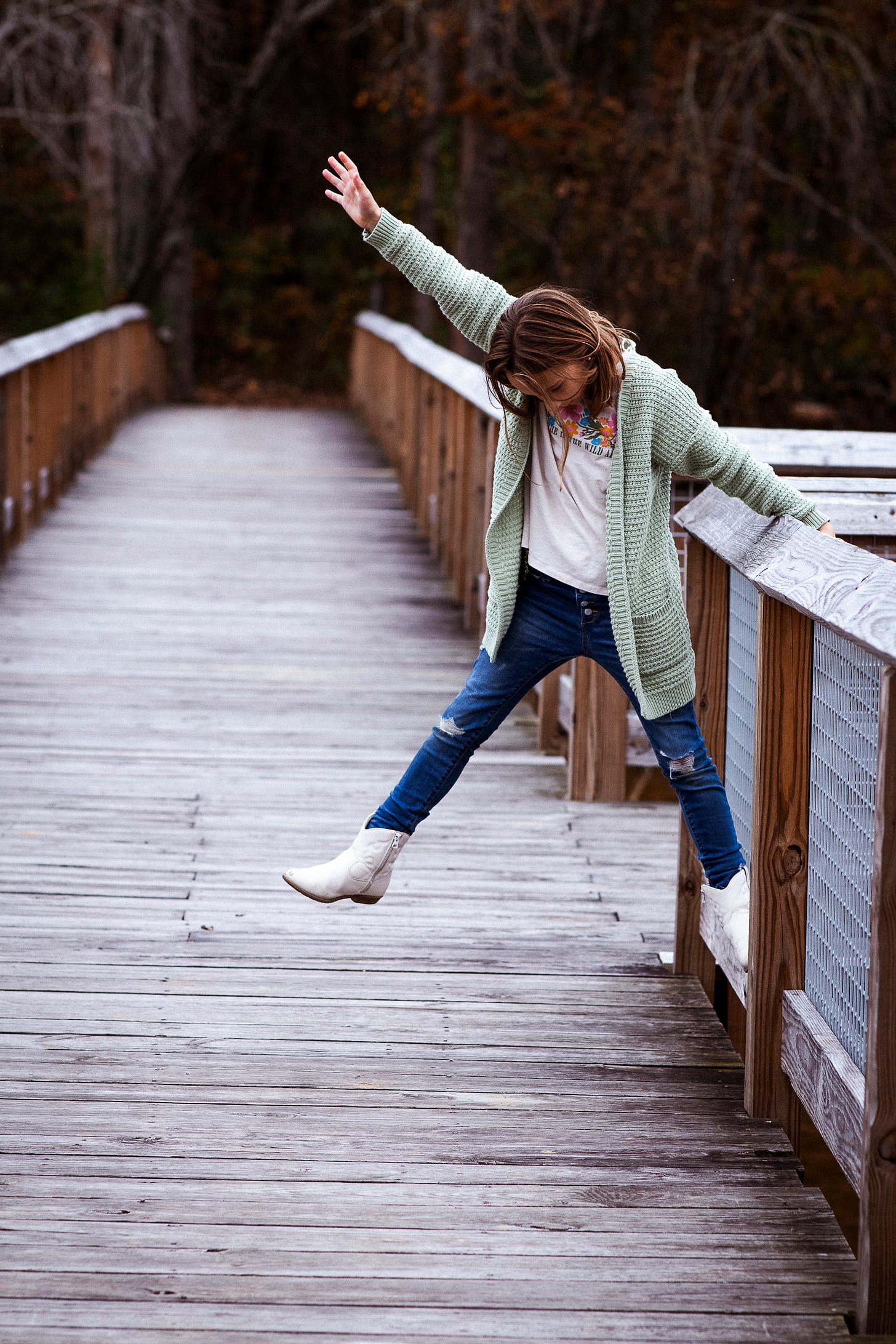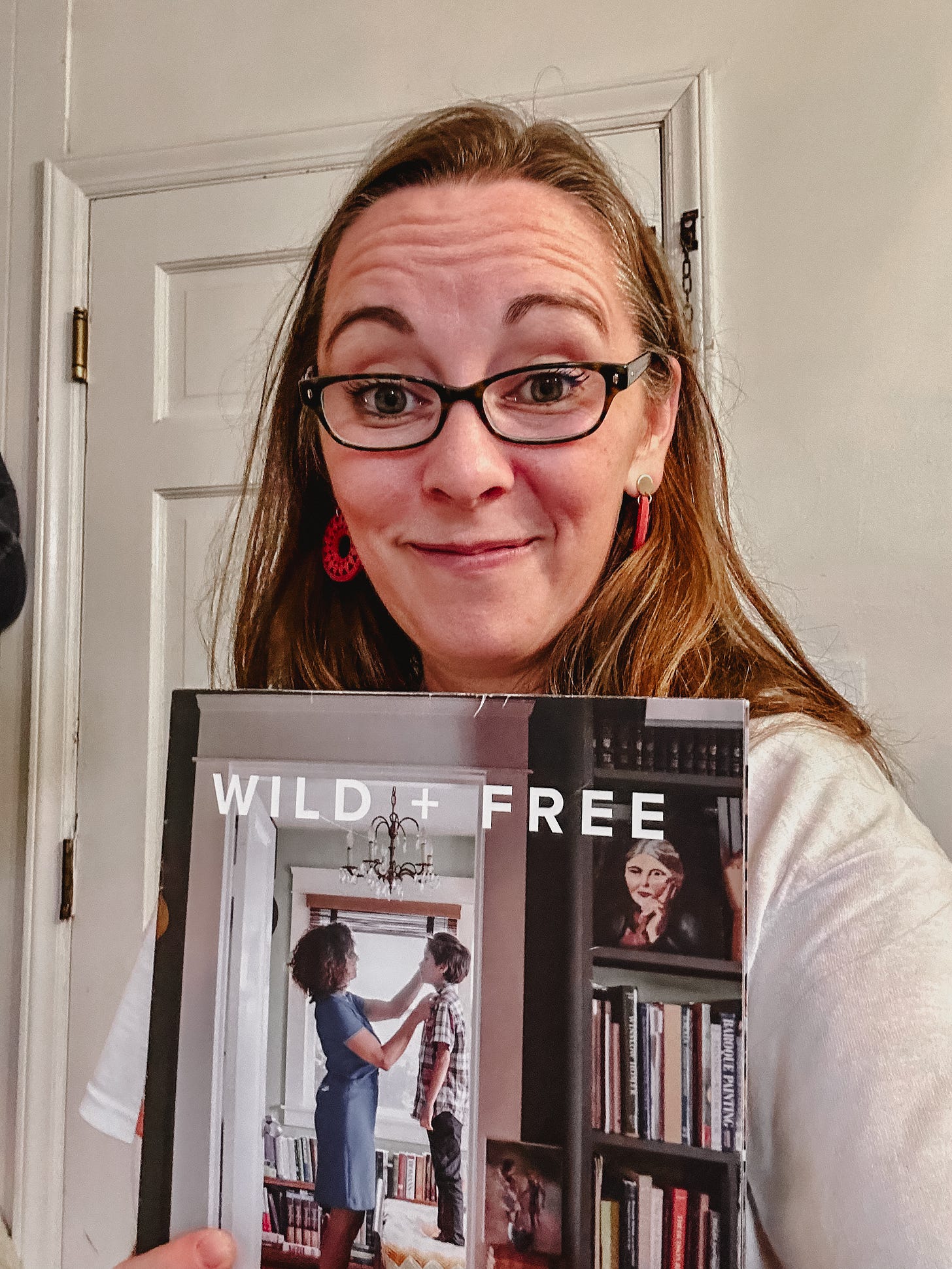“Let’s start at the very beginning; a very good place to start…” Julie Andrews’ voice comes to mind when I think about the early years in a child’s life. The Sound of Music is a family favorite but the reason I connect that line with early childhood is because of its simplicity and truth. The very beginning is indeed a very good place to start.
While becoming a parent is the true beginning of the journey, the preschool years bring a certain amount of well, uncertainty…for those of us who embark on the adventure of homeschooling. When is “the beginning” of their education? What should education look like in the early years? The culture tells us more is better, and the sooner the better.
When I was four (way back in the 1980s), my mom put me in a little two-morning Montessori program so I could play with other kids my age. My brother is twelve years older than me and my sister was not born yet so I was essentially an only child at the time.
We sang songs, read nursery rhymes and fairy tales, acted out plays, learned games like “duck-duck-goose,” played outside, made homemade kites and flew them, painted pictures, built structures with blocks, played dress-up and pretend, and had free-play time with musical instruments. I don’t remember eating snacks but we probably did; we weren’t there long enough to eat lunch. It was not uncommon for parents to be involved with activities, giving the whole thing a feel of being an extension of the home. It was lovely.
I eventually left that little school and went to half-day kindergarten five days a week and did much of the same thing plus some letters and numbers and printing and all this made up the crux of my formal education until I was about six.
By the time my boys arrived in the late 2000s, “pre-school” had become “preschool” and it was, dare I say, much more intense. Programs were open to kids as young as two and there was talk of getting the boys into the “right” preschool and a waitlist for the “best” one along with multiple school visits and interviews and talk of teaching my kids to read before kindergarten.
I am grateful that we chose the program that at least felt more play-based but I wish we would’ve just skipped it altogether. But, we had no intention of homeschooling at the time and I fell into perceived social peer pressure (I mean everyone else was doing it…) and let me tell you, mommy peer pressure is almost as bad as the junior high sort.
Fast-forward to my daughter. She came along after my heels were dug firmly in to this homeschool thing and by the grace of God I had already met Charlotte Mason. My daughter, therefore, had the best of the early years experiences and laid against the background of my regrets with my boys (they are fine, we are fine, God is sovereign ;)), I’d like to share some insights.
Let’s start by defining our terms.
“Pre-school” means before school. As in, you’re not doing school yet. Let that sink in.
“Preschool” is a modern phenomenon that has crept up on us over the last century touting to prepare kids for “real” school and sending mothers into a tizzy making us think our children need to be socialized in a large institution because what we are doing in our own God-given homes isn’t good enough.
If you are sending your littles to a preschool for means of safe babysitting a couple of times a week so you can get a break or buy groceries in peace, that is another thing entirely – we all need help from time to time. Part of the reason I sent mine was to catch my breath. But another (bigger) part was because I thought they needed it. I thought I was incapable of giving them what was necessary for them to thrive at that stage in their life. But I was wrong.
Bottom line, preschool is an unnecessary developmental step for our littles.
These formative, early pre-school years are what Charlotte Mason referred to as “a quiet growing time.” Children learn through play and experience and these years are best spent growing up alongside the example of mom, dad, and older siblings in the most natural and nourishing enviornment – home.
We all know the natural conditions under which a child should live; how he shares household ways with his mother, romps with his father, is teased by his brothers and petted by his sisters; is taught by his tumbles; learns self-denial by the baby’s needs, the delightfulness of furniture by playing at battle and siege with sofa and table; learns veneration for the old by the visits of his great-grandmother; how to live with his equals by the chums he gathers round him; learns intimacy with animals from his dog and cat; delight in the fields where the buttercups grow and greater delight in the blackberry hedges.
Charlotte Mason (Vol. 6 pp. 96, 97)
Miss Mason begins, “We all know…” but I really don’t think the collective “we” do anymore. In this information age mothers are taught that more is better and even more is best. This primarily relates to socialization, academics, and extracurricular activities…i.e. the proverbial hamster wheel we are all called to as “good” parents.
Preschool has become about performance, checking off boxes called “milestones” and let’s be honest, pressure. Is your child measuring up? Or is he behind? Even if you find a strictly play-based program (do those exist anymore?) with very gentle exposure to academics, it could be too much too soon for your little one.
So what should you do instead?
I’ve written quite a bit on this topic already so you can check out the resource links but I will sum up the pre-school years like this:
Play outside
Read good books
Work on habits
There are ways to expand on these and I do so in some of my linked articles but these are the basics. I’d also like to point out that these are daily touch points for you, as well. One of the most rewarding parts of homeschooling is growing alongside your child. If you touch on these three areas consistently throughout the early years - if this is your “curriculum,” so to speak, you will be just fine, mama.
Resources*
Pre-School…Not Preschool: How to Homeschool in the Early Years
Nurturing Your Pre-Schooler’s Mind: How to Homeschool in the Early Years
Nurturing Your Pre-Schooler’s Body: How to Homeschool in the Early Years
Nurturing Your Pre-Schooler’s Soul: How to Homeschool in the Early Years
Nurturing Your Pre-Schooler’s Schedule: How to Homeschool in the Early Years
A Case for the Early Years with Leah Martin from My Little Robins
Loving Our Preschool Life with Sonya Shafer from Simply Charlotte Mason
Meeting Charlotte Mason: Nature Study
How to Homeschool with Little Ones: Part 1
How to Homeschool with Little Ones: Part 2
How to Homeschool with Little Ones: Part 3
Charlotte Mason’s Home Education
1000 Hours Outside, especially the podcast
Angela Hanscom’s book, Balanced and Barefoot
Gladys Hunt’s books, Honey for a Child’s Heart
What’s New
I had the privilege of being in my favorite homeschool publication, writing about one of my favorite topics. If you haven’t subscribed to the Wild and Free bundles, I suggest you check them out. The folks @wildandfree.co have been encouraging me for years and the bundles are a great resource whether you are new to homeschool or a seasoned vet…or even just checking things out.
New podcast: The Winter Episode
If you haven’t purchased My Nature Journal, now is a great time to grab it!
Come visit me on Instagram»»
Till next time,
Cindy :)
*Many of the resources contain affiliate links. If you purchase an affiliate product, your price does not increase but I do get a tiny "thank you" portion from the company for recommending their products. I only have an affiliate relationship with products I use and love.






